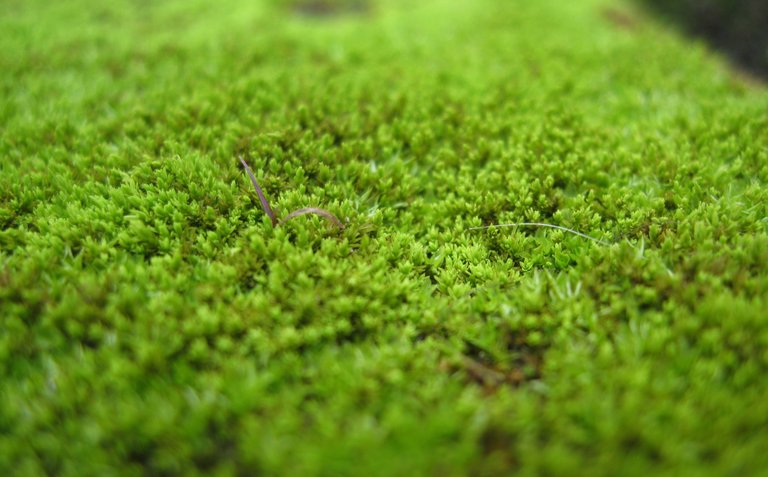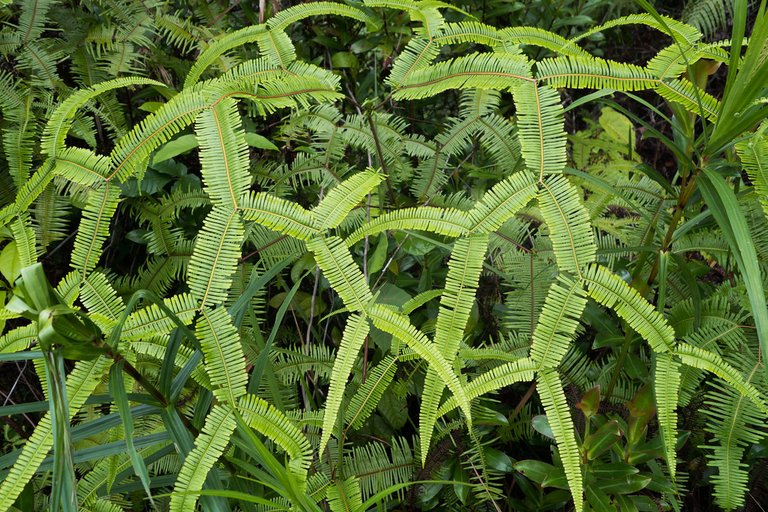Rose, Habiscus, and a few green plants or a tree, at least these are the plants that a lot of us are familiar with and until I got to high school I believed these were the only types of plants that existed, but asides from these flashy and flower producing plants, there are some plants that are important to ecosystem as they help them thrive, were one of the first plants in existence, and make great tree accessories but we do not often regard them as plants because we do not know much about them. These plants are Bryophytes and vascular plants that are seeddless like liverworts., ferns, and mosses.
We know that alga were the first to start plant life hundreds of millions of years ago before our human ancestors, and we are thankful to them for that early beginning and from there came the Bryophytes and Seedless vascular plants who are the precusors to the type of plants that we know around ourselves today. These early plant types are attributed to have first developed most of the characteristics essential to plants.
Bryophytes are monophyletic and they have existed for about 500 million years even before the Dinosaurs, and they were the first plant to grow on land. I guess I have to study these plant very well because they must surely have a very good survival mechanism to have escaped the extinction that took the dinosaurs. They do not contain the organs that plants have in today's world like the stem root and leaves, and they do not have vascular tissues for carrying water and nutrients around plants. But while bryophytes do not have these organs, seedless vasular plants began to have these organs.
In other for them to survive on land, they developed rootlike structures known as Rhizoids whose function is to anchor the plant to the surface rather than absorbing much water, and leaf like structures known as Phylids. They use the Rhyzoids to attach to rocks, surfaces and even plants so as to be able to absorb nutrient and water from the surface to the leaf-like structure called phylids.
deviantart

Mosses are Bryophytes with over 11 thousand species and they are attributed for the contribution of the stomata in plants. Moss currently are very important as they are able to minimize the amount of carbon dioxide which should be in the atmosphere. Asides from Mosses, another ancient plant is the liverwort which is very important in turning rocks to soil, and it is very important in decomposing logs so as to be able to return its nutrient to the soil.
Although Bryophytes are not tall trees, they still remain very important in our ecosystem and are able to withstand harsh weathers. They are also the first set of plants to grow on lands and environment that have been affected by fire or flood. Unlike plants after them that produces seeds, Mosses do not produce seeds rather they produce spores which are a result of a male sperm and female gamate which forms a Sporophyte. When the spore spread through the wind and lands on suitable surfaces, they begin to grow. The moss has both the Sporophyte generation and the Gametophyte generation.
About 200 years later, seedless vascular plant Lycophytes and Monilophytes came into existence. This plants did not also reproduce using seeds, rather they reproduce with spores but unlike the bryophytes, they formed true root, stem, and leaves making them to become the first vascular plant that existed. This change in plant helped them to be able to absorb water and nutrients better, and they were abl to grow bigger instead of just attaching to surfaces.
The seedless vascular plants had a permanent sporophyte and it was able to create more spores for reproduction. While a lot of them have gone extinct like Lycophytes which have existed 300 million years ago and were huge, some seedless vascular plant still exists like the clubmoss, spikemoss, and ferns although they aren't huge like trees, they have true roots, stems, and leaves. Ferns are important for scientists as they help in studying climate changes since they are sensitive to temperature and precipitation changes, and they are also great for purifying the air.
Reference
https://bio.libretexts.org/Bookshelves/Introductory_and_General_Biology
https://uni-tuebingen.de/en/university/news-and-publications
https://academic.oup.com/aob/article/109/5/851/140821
https://www.ncbi.nlm.nih.gov/pmc/articles/PMC4498653/
https://www.nature.com/scitable/topicpage/reading-a-phylogenetic-tree-the-meaning-of-41956/
https://www.tandfonline.com/doi/full/10.1080/09168451.2016.1224641
https://academic.oup.com/mbe/article/38/8/3332/6237914
https://openstax.org/books/biology/pages/25-3-bryophytes
https://www.sciencedirect.com/science/article/pii/S0960982219308619
https://ecologicalprocesses.springeropen.com/articles/10.1186/2192-1709-2-1
https://www.sciencedaily.com/releases/2016/11/161128121202.htm
https://mdc.mo.gov/discover-nature/field-guide/liverworts
https://bio.libretexts.org/Bookshelves/Introductory_and_General_Biology
https://uni-tuebingen.de/en/university/news-and-publications
https://academic.oup.com/aob/article/109/5/851/140821 https://www.ncbi.nlm.nih.gov/pmc/articles/PMC4498653/ https://www.nature.com/scitable/topicpage/reading-a-phylogenetic-tree-the-meaning-of-41956/ https://www.tandfonline.com/doi/full/10.1080/09168451.2016.1224641 https://academic.oup.com/mbe/article/38/8/3332/6237914 https://openstax.org/books/biology/pages/25-3-bryophytes https://www.sciencedirect.com/science/article/pii/S0960982219308619 https://ecologicalprocesses.springeropen.com/articles/10.1186/2192-1709-2-1 https://www.sciencedaily.com/releases/2016/11/161128121202.htm https://mdc.mo.gov/discover-nature/field-guide/liverworts


Thanks for your contribution to the STEMsocial community. Feel free to join us on discord to get to know the rest of us!
Please consider delegating to the @stemsocial account (85% of the curation rewards are returned).
Thanks for including @stemsocial as a beneficiary, which gives you stronger support.